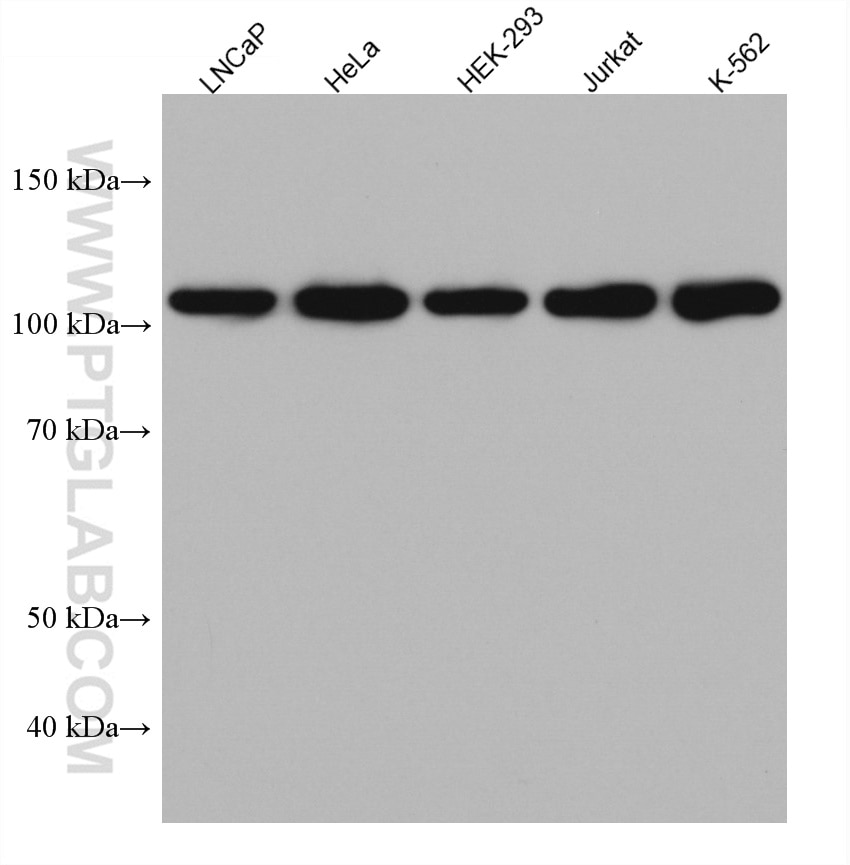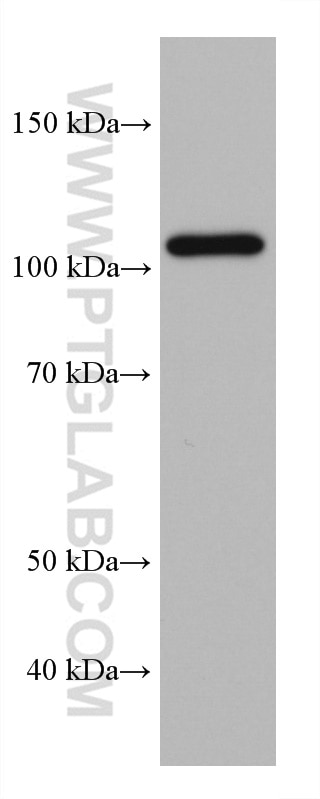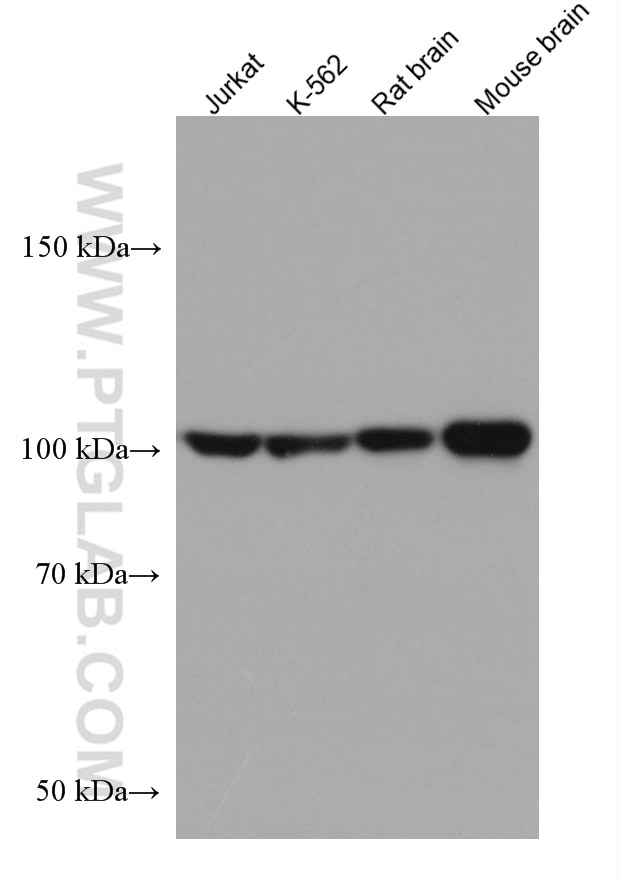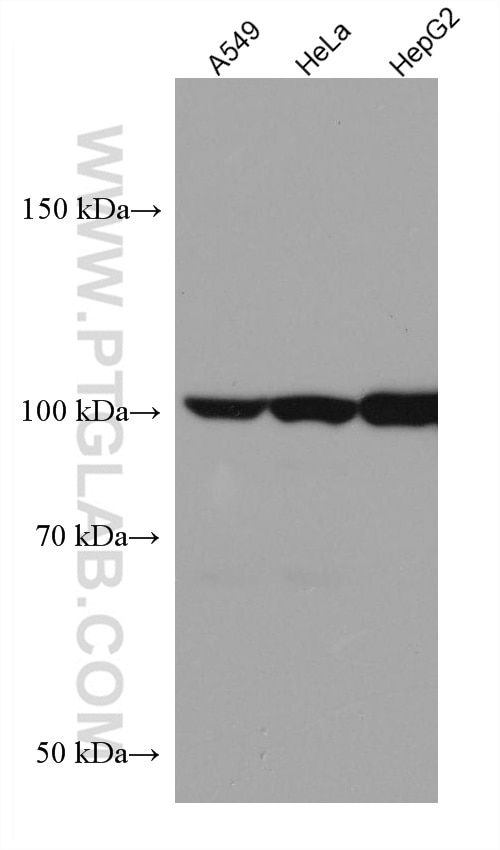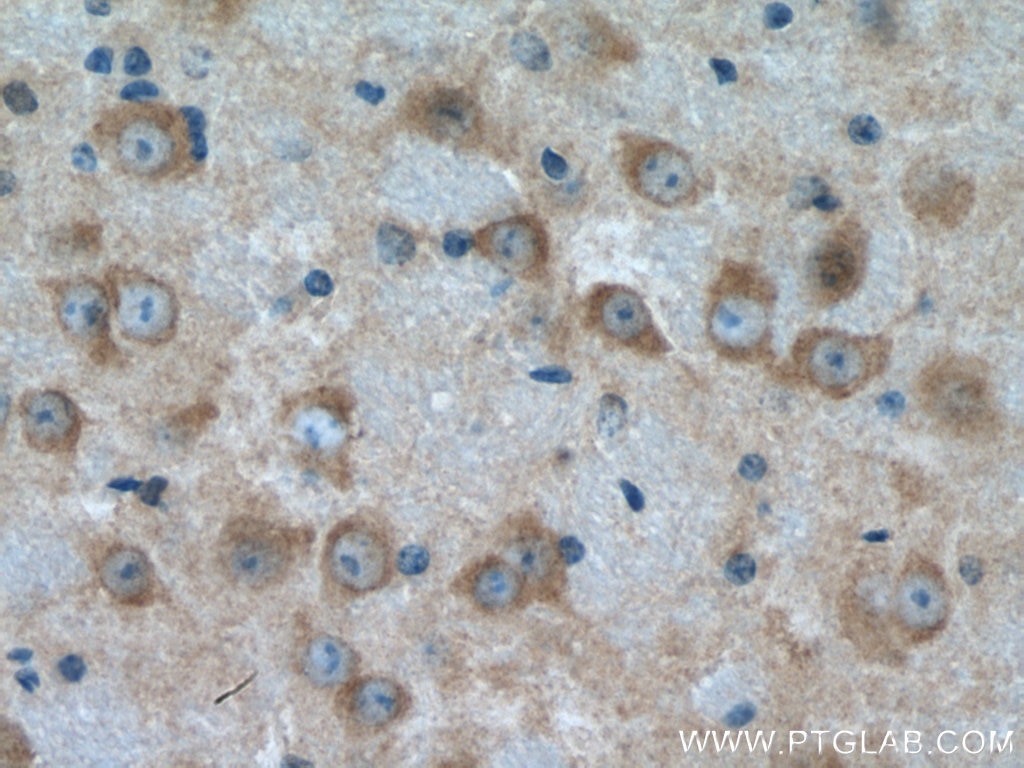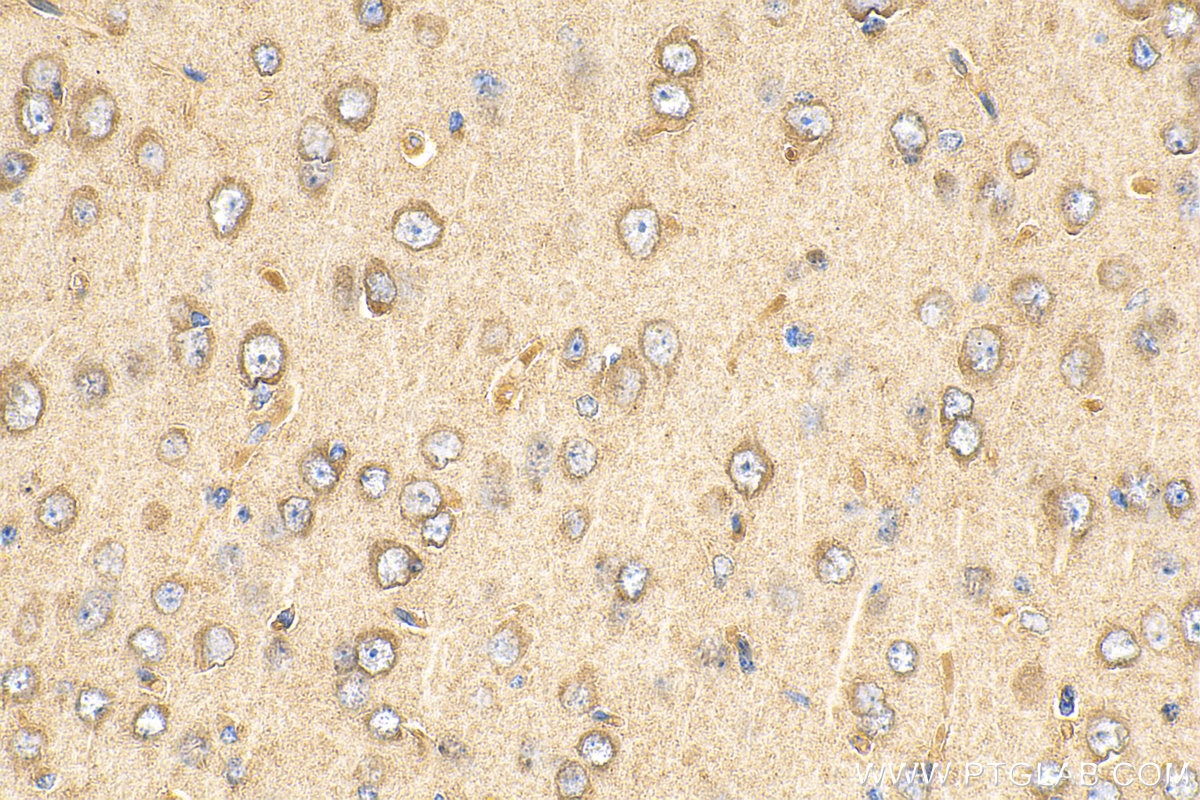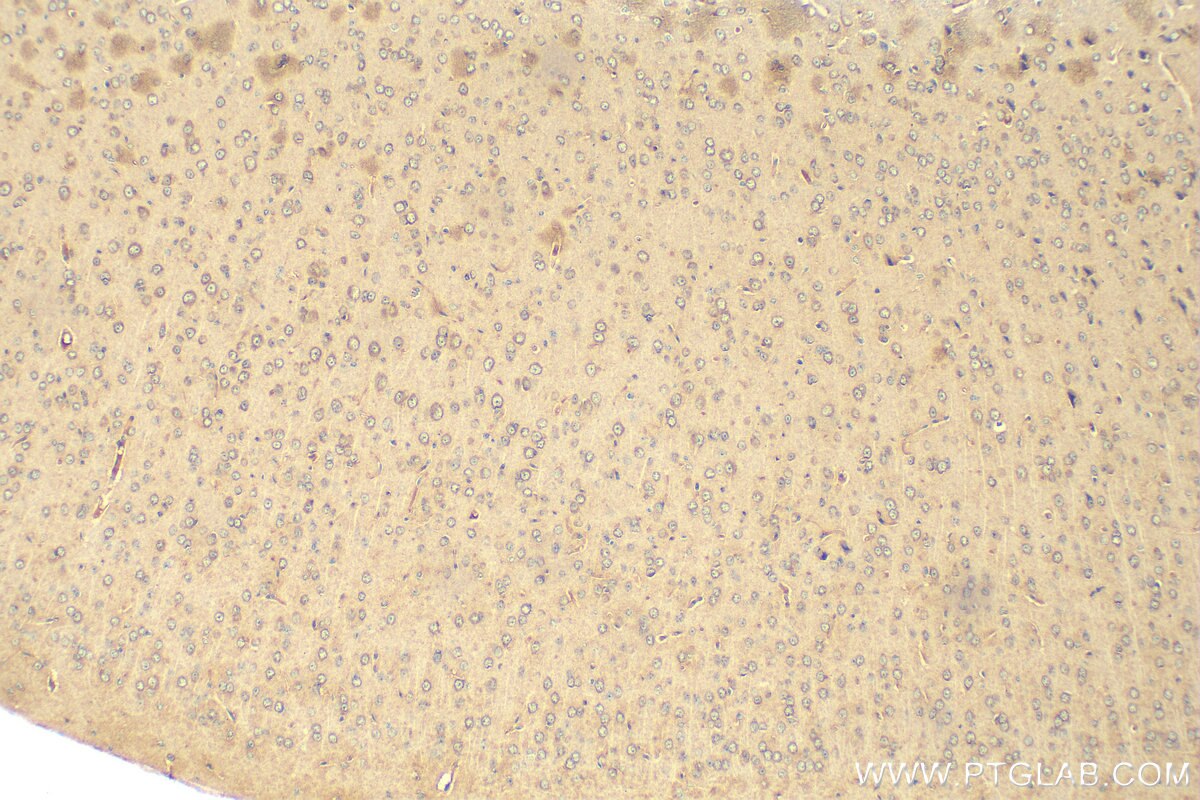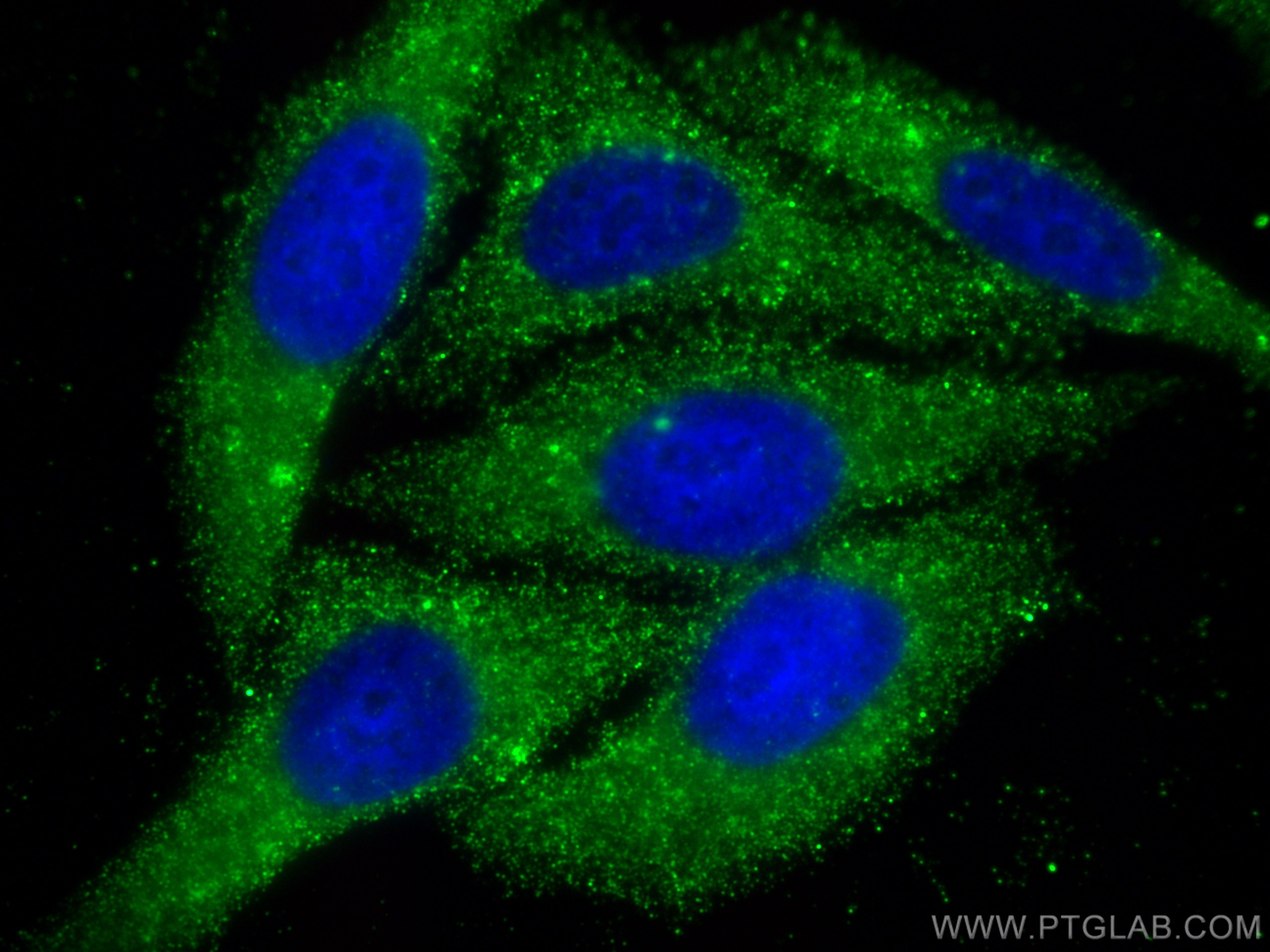HGS Monoklonaler Antikörper
HGS Monoklonal Antikörper für WB, IHC, IF/ICC, ELISA
Wirt / Isotyp
Maus / IgG2a
Getestete Reaktivität
human, Maus, Ratte
Anwendung
WB, IHC, IF/ICC, ELISA
Konjugation
Unkonjugiert
CloneNo.
3B10D6
Kat-Nr. : 67818-1-PBS
Synonyme
Geprüfte Anwendungen
Produktinformation
67818-1-PBS bindet in WB, IHC, IF/ICC, ELISA HGS und zeigt Reaktivität mit human, Maus, Ratten
| Getestete Reaktivität | human, Maus, Ratte |
| Wirt / Isotyp | Maus / IgG2a |
| Klonalität | Monoklonal |
| Typ | Antikörper |
| Immunogen | HGS fusion protein Ag28610 |
| Vollständiger Name | hepatocyte growth factor-regulated tyrosine kinase substrate |
| Berechnetes Molekulargewicht | 86 kDa |
| Beobachtetes Molekulargewicht | 110 kDa |
| GenBank-Zugangsnummer | BC003565 |
| Gene symbol | HGS |
| Gene ID (NCBI) | 9146 |
| Konjugation | Unkonjugiert |
| Form | Liquid |
| Reinigungsmethode | Protein-A-Reinigung |
| Lagerungspuffer | PBS only |
| Lagerungsbedingungen | Store at -80°C. 20ul Größen enthalten 0,1% BSA. |
Hintergrundinformationen
Hepatocyte growth factor-regulated tyrosine kinase substrate (HGS, synonyms: HRS, ZFYVE8) is a 110 to 115-kDa zinc finger phosphotyrosine protein inducible by stimulation with interleukin 2 (IL-2), granulocyte-macrophage colony-stimulating factor (GM-CSF) as well as hepatocyte growth factor (HGF), and is associated with signal-transducing adaptor molecule (STAM). HGS suppresses DNA synthesis upon stimulation with IL-2 and GM-CSF, counteracting the function of STAM which is critical for cell growth signaling mediated by the cytokines. HGS also interacts with the neurofibromatosis 2 tumor suppressor protein schwannomin/merlin. The growth suppression activity of schwannomin/merlin requires HGS and the binding of schwannomin/merlin to HGS facilitates its ability to function as a tumor suppressor, probably by inhibiting STAT activation.
